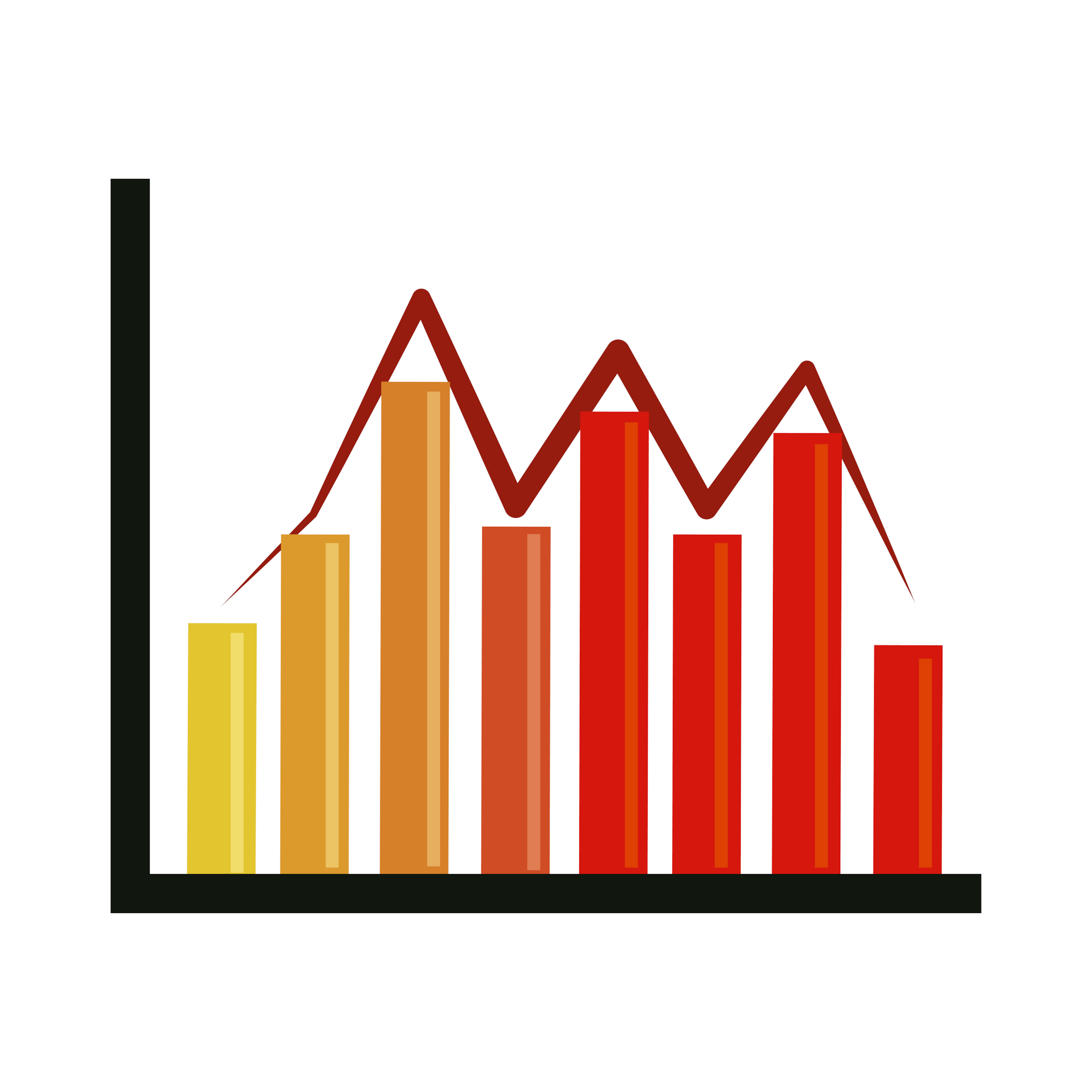Are pending home sales signaling a thriving market or hinting at a slowdown? This key metric, representing contracts awaiting closure, directly influences real estate forecasts and economic expectations. Our analysis delves into the latest pending home sales figures, shedding light on what they mean for the future of the housing market.
Key Takeaways
The Pending Home Sales Index (PHSI) is a vital forward-looking indicator measuring housing contract activity and can provide predictive insights into future housing market trends.
Various factors impact the PHSI, including economic conditions, mortgage rates, and regional differences, underlying the significance of local market dynamics on pending home sales.
While the PHSI offers valuable foresights for stakeholders such as buyers and sellers, overreliance on this index without considering broader economic signals can lead to misjudgments in the real estate market.
Decoding the Pending Home Sales Index (PHSI)

The Pending Home Sales Index (PHSI) quantifies housing contract activity through signed real estate agreements. This makes it a key indicator of housing activity. The PHSI’s importance is underscored by its ability to reveal the number of existing home sales in progress and predict future trends. Because of this, it provides valuable insights into the housing market’s condition.
The index, which measures housing contract activity, is benchmarked with a level of 100. This represents the average contract activity in 2001. The National Association of Realtors (NAR) has a vital role in developing and maintaining the PHSI, ensuring its accuracy and reliability.
The Fundamentals of PHSI
The PHSI is not just a number on a chart. It’s a representation of the heartbeat of the housing market, tracking the ebb and flow of activity month by month. The index is calculated by dividing the number of pending sales contracts signed in a particular month by the total number of existing homes. This information is then analyzed to provide a snapshot of the state of the real estate market. This aids in predicting future trends.
With regular monthly updates, the PHSI keeps you abreast of the housing market’s current state.
The Role of the National Association of Realtors (NAR)
The National Association of Realtors (NAR) plays a pivotal role in the PHSI. Established in 1908 with a mission to empower its members and represent the real estate industry, the NAR is the largest trade association in the United States for professionals operating within the real estate sector.
The NAR collects pending home sales data from Multiple Listing Services (MLSs) and large brokers nationwide, meticulously analyzing this data to produce the PHSI. Their tireless efforts ensure the PHSI remains a reliable and invaluable tool for understanding housing market trends.
Why PHSI Matters to the Housing Market
The PHSI extends beyond being a mere market analysis tool. It serves as a navigational aid through the extensive housing market. By monitoring signed contracts, the PHSI offers a more reliable indicator for future sales compared to other metrics like new home starts and mortgage applications. This insight into the housing market’s health allows industry professionals to anticipate future sales and provide guidance to clients regarding buying and selling strategies.
An upsurge in PHSI signifies heightened demand, which may result in price escalations, job generation, and increased consumer expenditure, ultimately enhancing the overall housing market.
The Anatomy of a Pending Home Sale

Behind the numbers of the PHSI lies the intricate process of a pending home sale. The path from contract to closing is an intricate process involving negotiations, inspections, and paperwork. Though this process can seem overwhelming, comprehending it can yield valuable insights into the housing market’s status.
From Contract to Closing
The journey of a pending home sale includes several steps:
Seller accepts an offer
Due diligence, inspections, appraisals, and securing financing
Initiating an escrow account
Performing a title search and acquiring insurance
Engaging legal representation
Negotiating closing expenses
This process generally takes approximately 50 days, with real estate professionals facilitating the process of signed real estate contracts.
Tracking Pending Sales: The MLS System

At the heart of tracking pending home sales is the Multiple Listing Service (MLS) system. The MLS is a database established by cooperating real estate brokers to provide data about properties available for sale. It documents properties that have a signed contract but have not yet closed, marking these listings as ‘contingent’ or ‘pending’ in the MLS database.
This tracking system offers crucial information on properties, including sales contract details, essential for compiling indexes such as the PHSI.
Factors Affecting Pending Home Sales
The pendulum of pending home sales swings under the influence of various factors. Various factors, including the overall economy, mortgage rates, and seasonal variations, all impact the PHSI. Understanding these elements allows us to make sense of the fluctuations in the PHSI and anticipate the ebb and flow of the housing market.
Comparing PHSI with Other Real Estate Metrics
The PHSI is akin to a jigsaw puzzle piece, complementing other real estate metrics to provide a holistic view of the housing market. Let’s explore how it compares with other metrics and how it helps predict market movements.
PHSI vs. Existing Home Sales Reports
While they may seem similar at first glance, the PHSI and existing home sales reports offer different perspectives of the housing market. The PHSI offers a forward-looking view of the market by monitoring signed contracts, while existing home sales reports document the number of home sales by examining mortgage closings.
How PHSI Predicts Market Movements
The PHSI’s predictive power lies in its ability to assess the quantity of homes under contract but not yet closed, serving as a leading indicator of future home sales activity. This information aids professionals in anticipating future sales and providing guidance to clients regarding buying and selling strategies.
Historical Data and Trend Analysis

The PHSI extends beyond the present. The PHSI’s historical data provides insights into past market trends, enabling us to comprehend the housing market’s patterns. Analyzing historical PHSI data can provide valuable insights into homebuyer activity, future inventory levels, and market conditions, helping us anticipate what lies ahead.
Geographic Insights: PHSI Across the Country
The PHSI is not a universal index. It differs across regions, reflecting the unique characteristics and economic conditions of each area.
We can traverse the country to understand how the PHSI fluctuates across different regions.
Regional Differences in Pending Home Sales

Similar to the varied landscapes in the United States, the PHSI also varies across different regions, including those with existing single family homes. From the bustling cities in the Northeast to the sunny beaches in the South, each region’s unique economic conditions, housing affordability, and interest rates influence its pending home sales.
The Impact of Local Economic Conditions
The PHSI is significantly influenced by local economic conditions. Factors like employment rates, income levels, and housing affordability can all impact the number of pending home sales. In areas with high employment and income levels, we may see a higher PHSI, reflecting strong demand for homes.
Conversely, in areas with lower income levels or high housing costs, the PHSI may be lower.
Spotlight on Major Markets
We can focus on some major markets to understand how their unique characteristics are reflected in the PHSI. Whether it’s the bustling real estate market of New York City or the more laid-back market in Austin, Texas, the PHSI provides valuable insights into each market’s unique dynamics.
Understanding the Implications of Changing PHSI Figures
Changes in the PHSI can have a ripple effect on the housing market, impacting buyers, sellers, and the broader economy. Let’s delve into these implications and see how changes in PHSI can impact various stakeholders.
For Buyers: Reading Between the Lines
The PHSI can function as a roadmap for potential homebuyers, directing their purchasing journey. A high PHSI might signify a strong housing market, resulting in heightened competition among buyers but potentially benefiting sellers through increased demand.
Conversely, a decrease could indicate a slower given market, offering opportunities for buyers, including those interested in co ops.
For Sellers: Timing and Market Conditions
Sellers can gain valuable insights about the optimal time to sell their property through the PHSI. A rising PHSI indicates increasing demand and a potential seller’s market, potentially prompting the listing of the property.
Conversely, a decrease in PHSI suggests a reduced number of buyers, which may prompt sellers to modify their strategies.
Broader Economic Indicators
The PHSI doesn’t exist in a vacuum. It’s linked to the broader economy, influencing and being influenced by various economic indicators. Changes in the PHSI can reflect the health of the broader economy, with a high PHSI often signaling a robust economy and vice versa.
In-Depth Case Studies: PHSI in Action
The PHSI isn’t just a theoretical concept. It’s a tool that’s been put to the test in the real world, with success stories and cautionary tales alike. Let’s explore some instances where the PHSI has been used to predict market trends and the potential pitfalls of relying too heavily on it.
Success Stories: When PHSI Predicted the Turnaround
There have been numerous success stories attributed to the PHSI. From accurately forecasting an increase in housing demand to predicting the recovery of the housing market after economic downturns, the PHSI has proven its worth as a powerful forecasting tool.
Cautionary Tales: The Risks of Overreliance on PHSI
Nevertheless, the PHSI does have certain drawbacks. There have been instances where overreliance on the PHSI has led to substantial losses.
Summary
The Pending Home Sales Index (PHSI) is a vital tool for understanding the housing market. It offers unique insights into the health of the market, helping buyers and sellers make informed decisions and predicting market trends. While it is a powerful tool, it’s important to remember that it’s just one piece of the puzzle, and should be used in conjunction with other indicators for a comprehensive view of the market.
For top strategies on marketing with social media in 2024, see our blog: https://www.quickcommissionadvance.com/blog/top-strategies-for-effective-social-media-marketing-for-real-estate-in-2024/
Frequently Asked Questions
What does a pending home sale mean?
A pending home sale means that the seller has accepted an offer from a buyer, but the sale has not been finalized yet. Once a home is pending, the chances of other buyers purchasing it become low.
Do most pending sales go through?
While failed pending sales are not common, they do occur, even in a thriving real estate market. According to the National Association of Realtors®, about 6% of all purchase agreements in the last three months of 2021 were terminated. These statistics show that despite favorable market conditions, some pending sales may not go through.
Is pending the same as under contract?
No, pending and under contract are not the same. “Under contract” comes after a buyer’s offer is accepted, while “pending sale” is the last stage before finalizing a deal. Pending listings are less likely to accept backup offers.
Is pending home sales a leading indicator?
Yes, the Pending Home Sales Index (PHSI) is considered a leading indicator of housing market activity, helping homebuyers and investors make informed decisions about property purchases.
What is the Pending Home Sales Index (PHSI)?
The Pending Home Sales Index (PHSI) is a leading indicator of housing activity, measuring housing contract activity through signed real estate contracts.

Leave a Reply